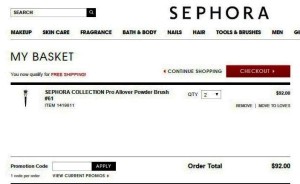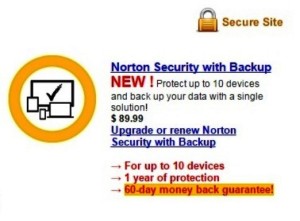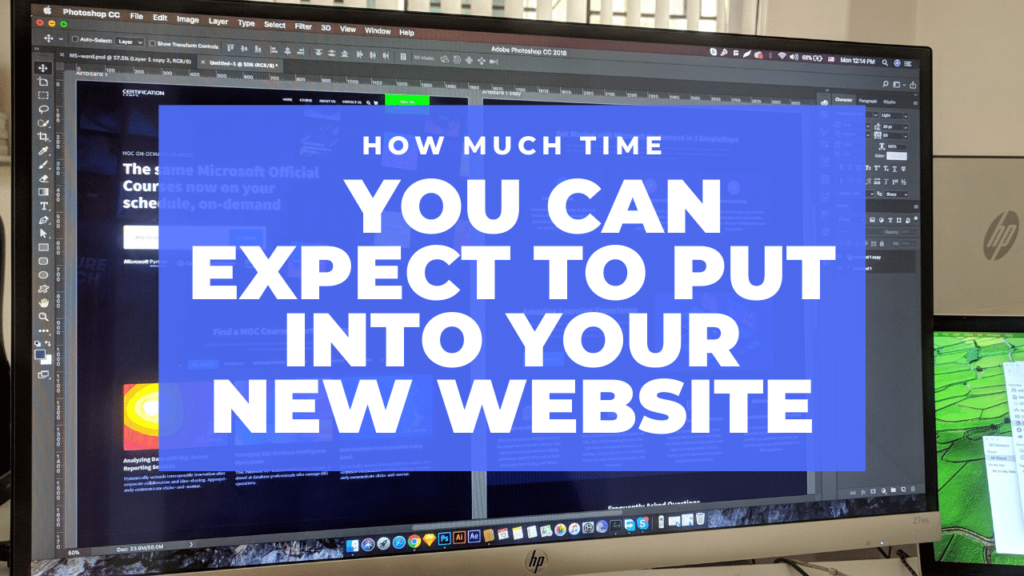With an almost 70 percent of shopping carts abandonment rate, the Internet is particularly ruthless toward marketers today. So it’s not an accident that the most intelligent brands take a calculated approach concerning their product pages as well as their shopping cart usability. In these areas, they take zero risks. But there is good news too. You can make simple, oft-overlooked tweaks to achieve a dramatic increase in your shopping cart conversions.
For instance, consider your product’s web page load time. Amazon calculated that a single additional second of their product pages’ load time would translate to an annual sales loss of $1.6 billion.
So from the search engine recommendation to your product images and eventually to your add to cart button, you have plenty of opportunities to increase your shopping cart conversions. Detailed here are some vital website tips that guarantee higher revenue.
Tip #1: Start Optimizing Your Shopping Cart Process with a Foolproof Analytics Program
If you haven’t put an optimizing process in place already, begin with Google Analytics. I love it because it’s free. It’s simple to implement and works smoothly with all kinds of websites. More importantly, you can integrate this free service into Google’s other free services such as Google My Business, Google AdWords, and Webmaster Tools.
Once your website analytics is in place and you begin receiving data, evaluate your shopping cart funnel. If you’re losing more buyers to abandonment at a particular point, it alerts you to the first place that needs further scrutiny and fixing. Next up, ask 3 co-workers or friends who aren’t familiar with your website to place an order. Observe what they do. Don’t interrupt them. Note whether they have doubts and whether they get stuck. Monitor whether they understand what exactly you want them to do. This informal test gives you an immediate insight into any major concerns.
The most important thing that helps your conversion rate but is often ignored is placing your own test orders. This testing process is the simplest and most overlooked aspect of conversion rate improvement testing. It’s rarely done. Check your shopping cart by placing a series of test orders in different browsers and devices. Perform these tests every week. Many things can fail concerning credit cards, billing, banks, PayPal, shipping enterprises, SSL certificates, algorithms, and many other technical elements. If one thing fails, it can interfere with your conversions or even prevent them altogether.
Remember, both usability and A/B tests are critical for improving the manner online shoppers interact with your business website’s shopping cart. So you must constantly test each element of the shopping cart—from the design to the wording and from its placement to color.
Tip #2: Emphasize Website Security and Privacy — Put Trust Guard’s Trust Seal on Your Business Website
Your buyers should feel safe and comfortable making their online purchase. Security and privacy are perhaps the most important features you should focus on. Otherwise, you will miss out on sales if you can’t assure your customers that your website is safe.
Customers may not be reluctant to make purchases on iconic websites such as Amazon.com and eBay. But for most other brands, it’s a challenge to inspire buyers to part with their money online. So you need to build the confidence of your buyers in the safe purchase process on your website.

Toward this end, a Trust Seal is effective. Numerous studies have categorically proved that. So put Trust Guard’s trust seal on your web pages. This trust seal works in building the confidence of your customers. It definitely increases sales conversion. Trust Guard’s Business Verified Seal is unquestionably the fastest and most effective way of confirming to your customers that you are genuinely the individual you say you are. This Business Verified Seal informs your customers that all your business information is authentic, and it’s been verified by Trust Guard. Disclaimer — We are a Trust Guard partner. We have no problem referring them because we use their trust seal for our clients. If you want to purchase Trust Guard, click on the image to get a steep discount.
Once your website passes the Trust Guard scan, you’ll be given their Trust Seal. You can display it on your website. This Trust Seal is a staggering beacon of awesomeness that builds trust as well as increases sales.
You could also display the security lock prominently in the browser and update your website’s SSL certificates. Use plain language to inform customers their data is safe. Whether your online customers are novice online shoppers or seasoned veterans, each one of them is concerned about these two aspects. So you need to reassure them that your website is totally secure. Also, inform them that you understand and value the confidential nature of their information and hence don’t share it with anyone.
Use secure checkout https and make it known. See image.

Simplify your checkout process but don’t compromise with your security and privacy information. Inform your buyers in clear language without distracting them. Link your privacy and security policies to open in a separate window. Avoid cluttering your shopping cart pages. Focus on minimizing distractions and reducing time spent on the buying process. Both these elements increase shopping cart conversions.
Tip #3: For Improvement in Shopping Cart Conversions, Enable Coupon Codes and Offer Money Back Guarantee
You shouldn’t take seemingly good ideas on the face value and implement them on your business website in a hurry. Here, a classic example is providing the coupon code box on your checkout page.
Consider for a moment: You are at the checkout page of a website. Now, you are asked for a promo code. You realize you don’t have one. What do you do?
Well, the majority would Google for one. Who wants to pay more when a minute of searching assures you a reasonable discount? However, here’s the catch.
Once your potential buyer is out of your website, there’re countless distractions. Would you deny that? And there’s every chance that one distraction might catch their eye. Perhaps, it’ll capture their attention and your would-be customer will just be added to “bounce.”
You’ll be thinking gleefully, “Oh! The coupon codes box on my business website will deliver higher shopping cart conversions.” Well, you see the loophole? How to fix it?
Simple.
Right next to your promo code box, provide a conspicuous “View Current Promos” link. Alternatively, request the buyer for their email address and mail the coupon code directly to their inbox.
Sephora Cosmetics displays a link just below their promotion code button. Buyers can use this link right away to view the current promo codes. And they aren’t distracted from their buying process.

A money back guarantee is indispensable to anything you sell. The industry standard is 30 days, but acclaimed brands offer anywhere between 7 days to 60 days.
Even if a buyer adds your product to their cart, they might need further convincing. They aren’t still sure they’re making the right choice in purchasing from you. This is where a 100% money back guarantee helps. The buyer will know they can get their money back if they’re not satisfied.
Look at Norton’s 60-day money back guarantee.

Obviously, a money back guarantee is the most powerful pain compensation guarantee you can offer to your customers. It increases trust. Importantly, it increases your shopping cart conversions.
Tip #4: Add 3rd Party Reviews About Your Brand, Not Just the Reviews for the Actual Product/Service
Third party customer reviews are vital for your business website because they help potential buyers make better and quicker decisions when buying your products online. Websites such as Amazon.com get frequent customer reviews which benefit their business. But if you’re a lesser known brand, you may need to strive harder to establish shoppers’ trust.
Today, third party reviews are commonplace on most ecommerce websites. These reviews undoubtedly drive sales. Most online shoppers visiting your website come with the expectation of being able to read third party reviews before they decide to purchase your product.
Well, how do online shoppers know which reviews to trust. Simple. Use Shopper Approved, the third party review provider that most ecommerce sites use.

Online shoppers are familiar with the style of presentation and brand name of Shopper Approved. Since their third party reviews are verified, they create more confidence. You don’t control the reviews. Shopper Approved does.
Shopper Approved is the lowest priced 3rd party review enterprise that syndicates your brand’s reviews to Google AdWords as well as Bing Ads. You can get star ratings on your brand’s paid search ads to counter your competitors. Check the pricing of other third party review providers: ResellerRatings Pricing and TrustPilot.
You really don’t need all the other features that Trust Pilot and ReStore Ratings attempt to sell you. You just need the star ratings on your ads.
DISCLAIMER: We, at Planet Marketing, referred many people to Shopper Approved. We are their partner. You get a 60-day FREE trial instead of the 30-day free trial if you use our link. But you pay a lesser price: $79/mo. Our Shopper Approved link: Shopper Approved
Latest Update:
Shopper Approved no longer displays pricing. But they are still one of the cheapest. We know, because we have referred over 300 people to Shopper Approved. You can get a discount by signing up using the Planet Marketing link.
https://5stars.shopperapproved.com/planetmarketing/
Take advantage of the discount now.
Purchase Now!
You also get 30 days free when you sign up using our link.
Tip #5: List Shipping Options and Prices Clearly; Better Still Offer Free Shipping
Shipping is another important area that can make or break shopping cart conversions. High shipping prices are by far the number one reason online shoppers abandon carts. So you should list your shipping prices clearly. Remember, online shoppers are essentially bargain hunters. Most of them don’t fancy paying shipping costs. However, shipping expenses are an indispensable component of online e-commerce. They are unavoidable. Whether you roll shipping prices into your product prices and offer the shoppers free shipping or you intend to charge for shipping separately, you should let the online shoppers know it right away. They prefer it that way. They can abandon the cart because they’re not sure of the pricing. Or else, they are angered when they see the final price. They don’t complete the sale but choose to disappear.
You can increase shopping cart conversions by offering shoppers different price structures for different shipping speeds. Some shoppers may want the product right away and don’t mind paying the extra shipping costs. But others may be willing to forego immediate delivery for a lower price. Find the right balance in this area. Test various options and offer the ones that result in highest conversions. But don’t offer too many shipping options because some shoppers may become paralyzed with confusion. Indecision will strike them and hurt your conversions as well.
Online shoppers love free shipping. Many of them only buy items that ship for free. Most buyers will choose an item that ships free over an item that has a separate shipping charge, even when the total cost is identical. Free shipping pays for itself in numerous ways.
Free shipping guarantees:
• More shoppers choosing your products.
• Default 5-star rating for shipping price when your customer chooses free shipping.
• An increase in search results for your brand’s Fixed Price listings.
Summary
The checkout page is the vital piece of your business website. Although optimizing your website is important, fine-tuning your shopping cart as well as checkout pages is an ongoing process. You should devote time for this each week. Many a sale is captured or lost based on what transpires when an online shopper reaches your shopping cart. The various features of your shopping cart make the difference in converting a shopper into a customer. If all the features are perfect, you can convert even a casual visitor into a customer.



